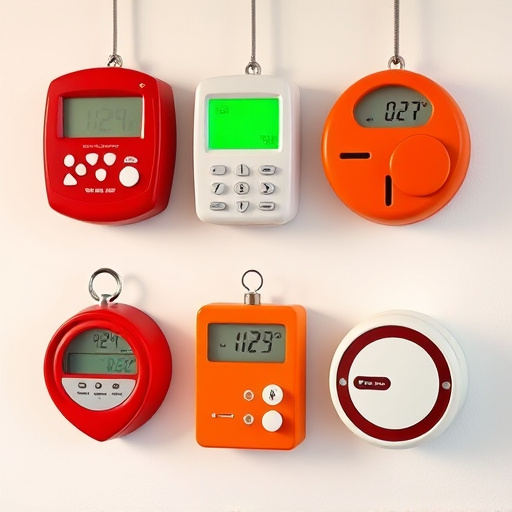Lone workers face elevated risks due to isolation. A Personal Alarm With Phone Alert is crucial for swift emergency response by sending signals to pre-registered contacts or central monitoring stations via mobile networks. GPS tracking and software provide detailed insights into worker location and activity patterns. Regular updates, testing, and user training on proper use are essential to ensure optimal performance and reliability of these life-saving tools.
In today’s fast-paced work environment, many employees operate alone, increasing exposure to potential risks. This highlights the crucial need for safety alert systems, especially for lone workers. This article delves into the critical aspect of keeping isolated workers safe by focusing on understanding the inherent risks, exploring key system components, and providing best practices for implementing personal alarms with phone alerts—a game-changer in ensuring swift response and peace of mind.
- Understanding the Risks of Lone Work
- Key Components of an Effective System
- Best Practices for Implementing Personal Alarms
Understanding the Risks of Lone Work
Lone workers, by definition, operate independently without immediate supervision, which can significantly elevate potential risks. These include isolated incidents, accidents, or emergencies where help may be delayed due to a lack of colleagues nearby. Understanding these risks is paramount in implementing effective safety measures.
One essential tool in mitigating these dangers is the personal alarm with phone alert feature. This compact and easily portable device allows workers to quickly summon assistance in case of an emergency. By pressing the alarm, a signal is sent out, alerting pre-registered contacts or a central monitoring station. This immediate notification enables swift response times, ensuring the safety and well-being of lone workers.
Key Components of an Effective System
An effective safety alert system for lone workers should include several key components designed to ensure rapid communication and response in case of emergency. One central element is a Personal Alarm With Phone Alert. This device allows workers to quickly trigger an alarm signal, which can be transmitted to designated contacts or emergency services via mobile phone networks. The integration of such technology enables immediate assistance, even in remote locations where traditional communication methods might be limited.
Additionally, the system should incorporate real-time tracking capabilities through GPS and robust software that provides detailed insights into the worker’s location and activity patterns. This not only aids in identifying potential risks but also facilitates swift action during emergencies. Regular updates and testing of these components ensure optimal performance when it matters most, enhancing overall safety for lone workers.
Best Practices for Implementing Personal Alarms
Implementing a personal alarm system with phone alert functionality is a proactive step toward ensuring the safety of lone workers. Best practices involve selecting devices that are compact, durable, and user-friendly, allowing for quick activation during emergencies. Training employees on the proper use and maintenance of these alarms is paramount; this includes understanding the different alerts and signals, as well as the steps to follow after activating the alarm.
Placement and accessibility are also key considerations. Personal alarms should be easily accessible, both physically and in terms of operation. It’s advisable to attach them to clothing or carry them at all times, ensuring workers can activate them immediately without having to locate a separate device. Regular testing and maintenance checks will ensure these life-saving tools remain reliable when needed most.
Lone worker safety is no longer a niche concern; it’s a vital aspect of modern workplace management. By understanding the unique risks associated with solo operations, implementing robust systems with essential components like immediate personal alarm notifications with phone alerts, and adhering to best practices for their use, employers can significantly enhance the security and peace of mind for their lone workers. This proactive approach ensures that help is readily available when needed, making it a crucial step in fostering a safe and productive work environment.
